Menu
Physics Lesson 6.8.1 - Momentum in Two Dimensions
Please provide a rating, it takes seconds and helps us to keep this resource free for all to use
Welcome to our Physics lesson on Momentum in Two Dimensions, this is the first lesson of our suite of physics lessons covering the topic of Momentum and Impulse in Two Dimensions. Explosions., you can find links to the other lessons within this tutorial and access additional physics learning resources below this lesson.
Momentum in Two Dimensions
A head-to-head collision (as discussed in the previous two articles), occurs only when the motion of objects occurs according the line that connects their respective centres of mass, as shown in the figure below. 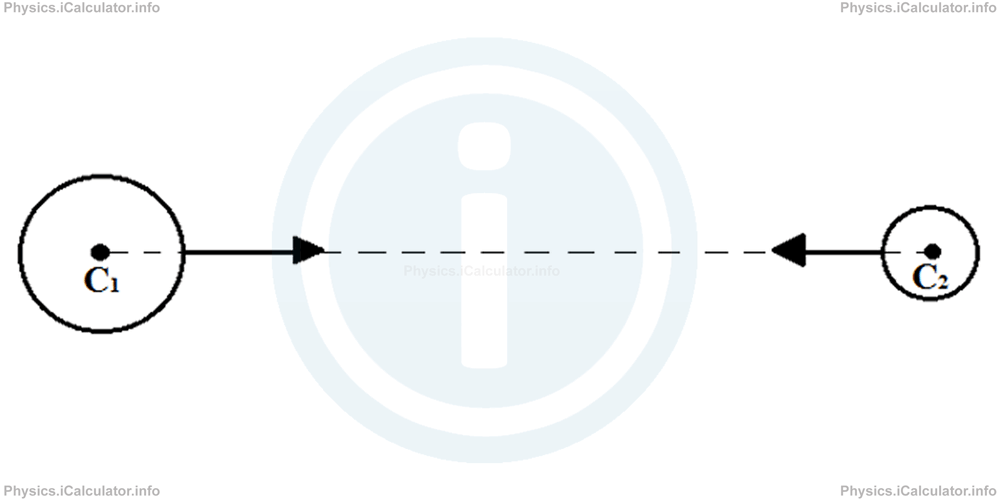
The figure shows an upper view of two balls moving towards each other. Even after the collision, they will continue moving according the line that connects their centres of mass, either in the same or in opposite direction they had prior to collision, depending on their respective masses and initial velocities.
But when objects are not moving according the line that connects their centres of mass but slightly diverted from it, as shown in the figure, 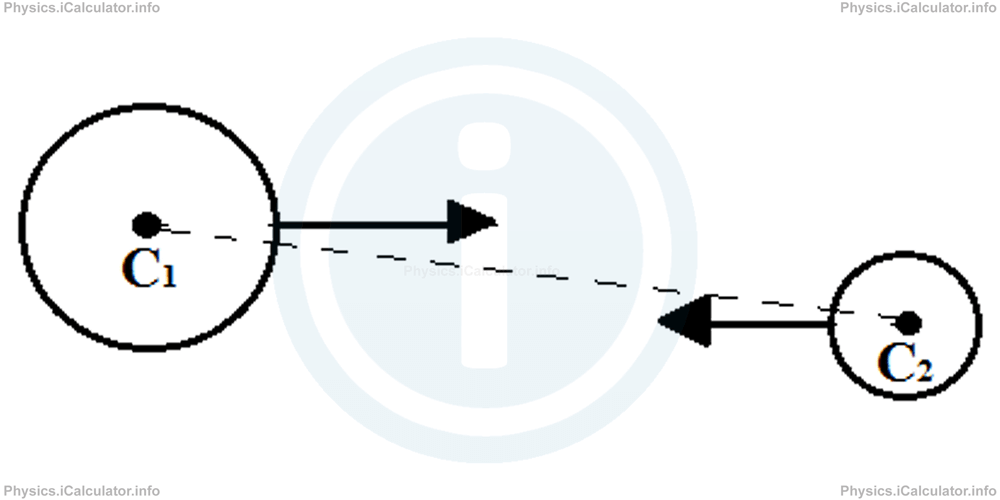
the collisions will not be head-to-head anymore. As a result, objects will move on other directions as shown below. 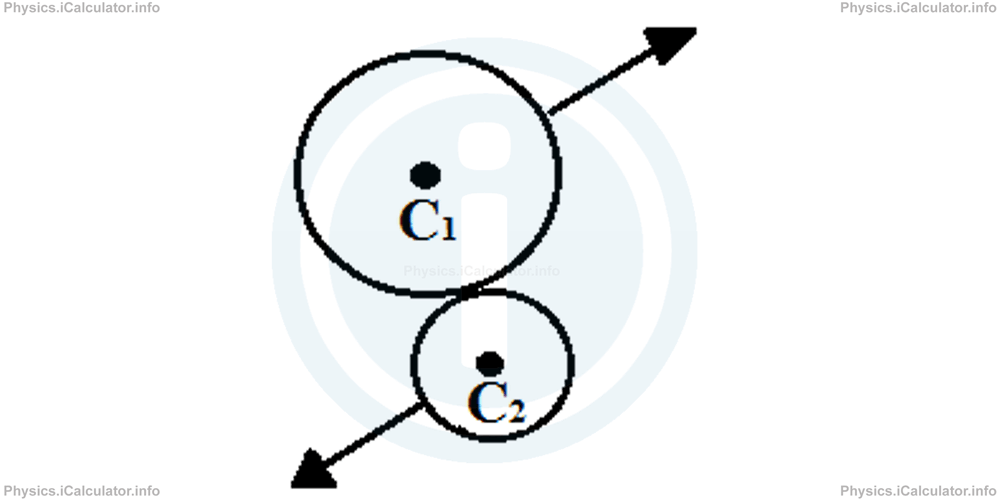
As a result, the study of momentum and impulse for this kind of collision involves two directions: x- and y-direction as the movement of the two objects after the collision is a combination of these two basic directions.
The approach is the same as for momentum and impulse in one direction discussed earlier. The only difference is that we must write the known equations for each direction separately.
Thus, for elastic collisions we have:
x-direction Formula
m1 × v⃗01(x) + m2 × v⃗02(x) = m1 × v⃗1(x) + m2 × v⃗2(x)y-direction Formula
m1 × v⃗01(y) + m2 × v⃗02(y) = m1 × v⃗1(y) + m2 × v⃗2(y)and for inelastic collisions, we have
x-direction Formula
m1 × v⃗01(x) + m2 × v⃗02(x) = (m1 + m2) × v⃗xy-direction Formula
m1 × v⃗01(y) + m2 × v⃗02(y) = (m1 + m2) × v⃗yNormally we don't have to use all the four above equations in the same exercise. Even if the initial motion is a combination of the two basic directions, we can rotate the axes to make one of them fit to the direction of motion, just as we did when studying the forces acting at an object on an inclined plane (tutorial "Newton's Second Law of Motion"). Below, an illustration showing two objects moving towards each other but not in the head-to-head direction is shown.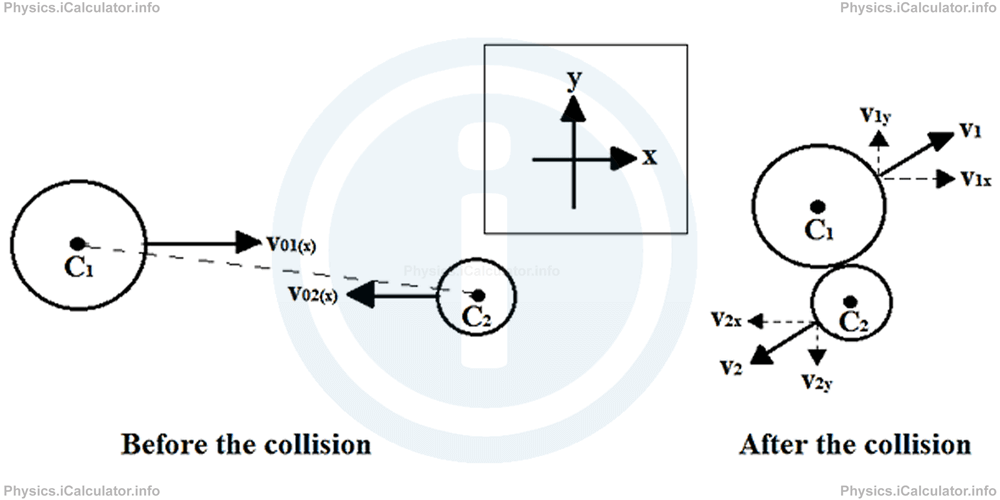
The angles formed by object's trajectory to the horizontal direction (if not given), are calculated by using trigonometric functions, as usual.
Example 1
A 200 g ball moving at 4 m/s collides with a 400 g ball initially at rest. After the collision, the first ball moves at 3 m/s and at 37° to the original direction as shown in the figure. 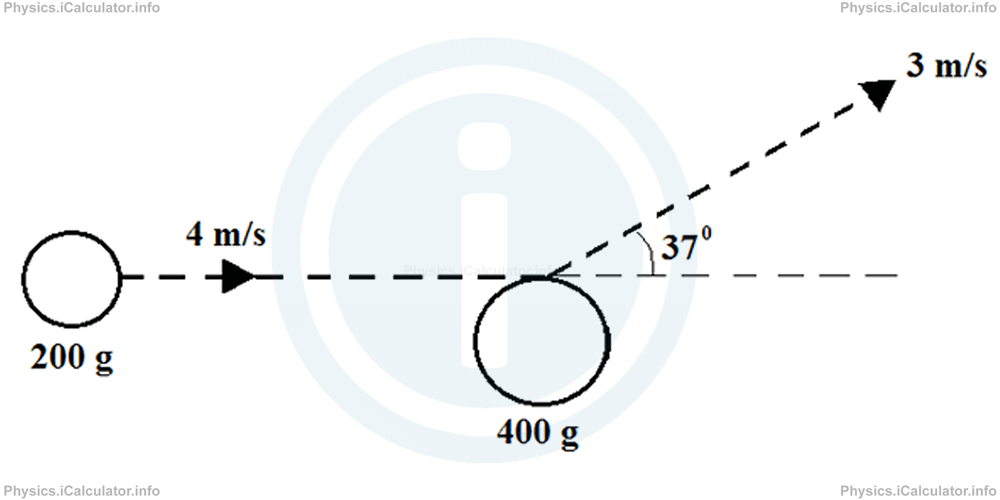
Calculate:
- The components of velocity of the 400 g ball after the collision.
- The magnitude of velocity of the 400 g ball after the collision.
- The angle formed by the 400 g object to the horizontal direction after the collision.
Take cos 37° = 0.8 and sin 37° = 0.6.
Solution 1
First, let's write the clues. Since the first ball initially moves in the x-direction only and the second object is at rest, we have:
m2 = 400 g = 0.4 kg
v01(x) = 4 m/s
v01(y) = 0
v02(x) = 0
v02(y) = 0
θ1 = 37°
v1 = 3 m/s
v2(x) = ?
v2(y) = ?
v2 = ?
θ2 = ?
Also, we have:
v1(y) = v1 × sin θ1 = 3 × 0.6 = 1.8 m/s
a. Let's calculate the components of the 400 g object's velocity after the collision.
0.2 × 4 + 0.4 × 0 = 0.2 × 2.4 + 0.4 × v⃗2(x)
0.8 = 0.48 + 0.4 × v⃗2(x)
v⃗2(x) = 0.8 - 0.48/0.4 = 0.8 m/s
m1 × v⃗01(y) + m2 × v⃗02(y) = m1 × v⃗1(y) + m2 × v⃗2(y)
0.2 × 0 + 0.4 × 0 = 0.2 × 1.8 + 0.4 × v⃗2(y)
0 = 0.36 + 0.4 × v⃗2(y)
0.4 × v⃗2(y) = -0.36
v⃗2(y) = -0.36/0.4 = -0.9 m/s
These results mean the second ball will move at 0.8 m/s right and 0.9 m/s down.
b.The magnitude of the second object's velocity after the collision is
= √0.82 + (-0.9)2
= √0.64 + 0.81
= √1.45
= 1.20 m/s
c.We can use any of trigonometric equations to find the angle θ2 formed by the second ball to the horizontal direction. We have:
= v⃗2(y)/v⃗2(x)
= -0.9/0.8
= -1.125
This tangent value corresponds to two angles: -48.370 and 131.630. We will take the first angle as it fits the description (the velocity lies right-down).
The final figure that includes everything we found so far, is shown below.
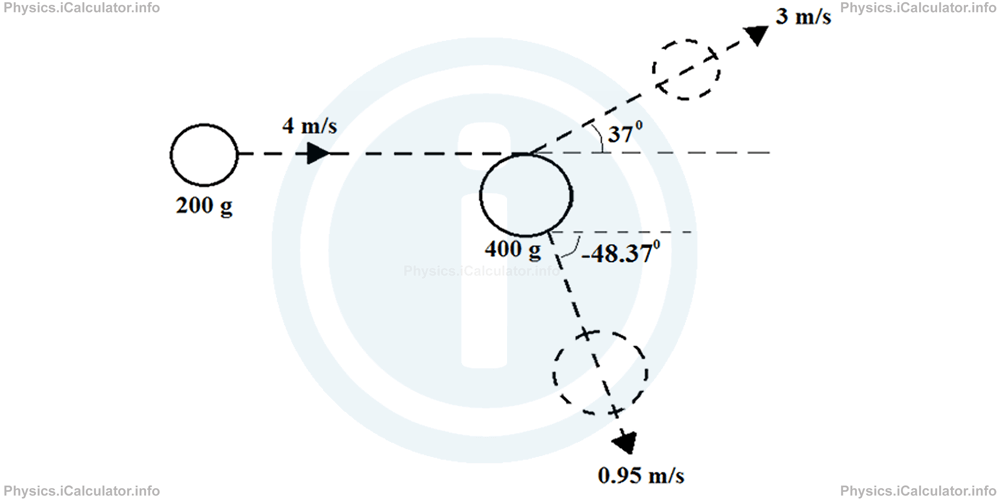
You have reached the end of Physics lesson 6.8.1 Momentum in Two Dimensions. There are 3 lessons in this physics tutorial covering Momentum and Impulse in Two Dimensions. Explosions., you can access all the lessons from this tutorial below.
More Momentum and Impulse in Two Dimensions. Explosions. Lessons and Learning Resources
Whats next?
Enjoy the "Momentum in Two Dimensions" physics lesson? People who liked the "Momentum and Impulse in Two Dimensions. Explosions. lesson found the following resources useful:
- Momentum Feedback. Helps other - Leave a rating for this momentum (see below)
- Centre of Mass and Linear Momentum Physics tutorial: Momentum and Impulse in Two Dimensions. Explosions.. Read the Momentum and Impulse in Two Dimensions. Explosions. physics tutorial and build your physics knowledge of Centre of Mass and Linear Momentum
- Centre of Mass and Linear Momentum Revision Notes: Momentum and Impulse in Two Dimensions. Explosions.. Print the notes so you can revise the key points covered in the physics tutorial for Momentum and Impulse in Two Dimensions. Explosions.
- Centre of Mass and Linear Momentum Practice Questions: Momentum and Impulse in Two Dimensions. Explosions.. Test and improve your knowledge of Momentum and Impulse in Two Dimensions. Explosions. with example questins and answers
- Check your calculations for Centre of Mass and Linear Momentum questions with our excellent Centre of Mass and Linear Momentum calculators which contain full equations and calculations clearly displayed line by line. See the Centre of Mass and Linear Momentum Calculators by iCalculator™ below.
- Continuing learning centre of mass and linear momentum - read our next physics tutorial: Torque
Help others Learning Physics just like you
Please provide a rating, it takes seconds and helps us to keep this resource free for all to use
We hope you found this Physics lesson "Momentum and Impulse in Two Dimensions. Explosions." useful. If you did it would be great if you could spare the time to rate this physics lesson (simply click on the number of stars that match your assessment of this physics learning aide) and/or share on social media, this helps us identify popular tutorials and calculators and expand our free learning resources to support our users around the world have free access to expand their knowledge of physics and other disciplines.